Editor’s Note: At the Samuel H. Ordway Prairie Preserve, students from Gustavus Adolphus College will soon be arriving to follow bison herds for the summer. This research program is not only taking an in-depth look at animal behavior, it’s also providing information on how to best manage bison on fenced reserves. Today, we’re running a previously published blog on last year’s student researchers at Ordway Prairie.
I’m in the back seat of the vehicle as two female college students drive around, listen to music and—in their words—“look for guys.”
Just another evening for students on break, right?
Well, not quite.
These students aren’t driving to a party, nor are they cruising around downtown. There is no town. For that matter, there’s no road.
We’re bouncing around mixed grass prairie in South Dakota, the four-wheel-drive pick-up thumping over ruts and rocks. The vehicle’s loaded with notebooks, GPS units and animal bones.
And the”guys”?
They’re large, shaggy and prone to bellowing, wallowing and urinating on themselves.
They’re bison bulls, the subject of these students’ summer research project.
Michelle Hulke and Mary Joy Sun, entering their sophomore years at Gustavus Adolphus College in St. Peter, Minnesota, have spent day after day recording the bison bulls’ fights, vocalizations and even tongue positions.
It’s a research effort aimed at determining if bison bull behavior can be managed to produce more genetically diverse herds in fenced preserves and ranches, the type of environments where most bison herds now roam.
Hulke and Sun are the sixth set of Gustavus Adolphus students to research herd behavior at The Nature Conservancy’s Samuel H. Ordway Prairie Preserve, a 7,800-acre grassland property near Leola. Each year, students at Gustavus Adolphus have the opportunity to participate in research projects following their freshmen year. The bison project has become one of the most popular.
Conservancy preserves and projects offer the perfect outdoor laboratories for undergraduate field research. The Conservancy employs mentors in the form of 550 scientists, and many projects already have a “science infrastructure”—the tools, established research protocols and housing and logistics that support fieldwork. Students learn not only science but also community relations, marketing and land management.
Preserves are places where budding scientists can develop their skills and contribute to meaningful conservation. It’s a place where tomorrow’s conservation leaders can gain field experience in spectacular settings.
In this case, that means living amongst bison herds.
Little Dorm on the Prairie
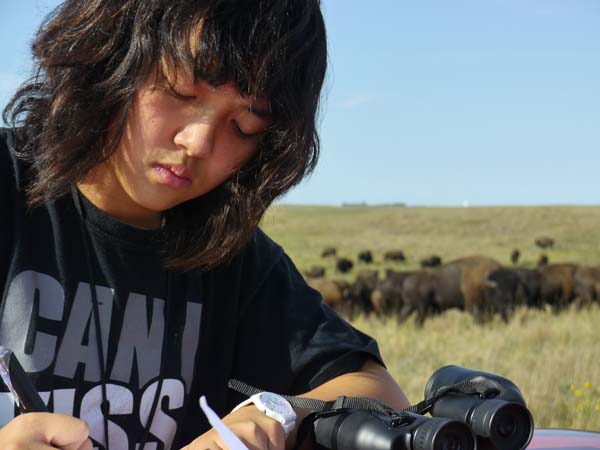
It’s 6 a.m. the next morning and Hulke and Sun are readying camera gear, notebooks and novels (in case the bison aren’t doing much today). Both students are spending nine weeks on the preserve, living in a ranch house and spending each day amongst the bison.
Their only neighbors are ground squirrels, meadowlarks and a herd of ranch horses. Three other seasonal students also live on the preserve. “It’s kind of like a dorm, just out on the prairie,” says Hulke. “It’s not such a bad place to spend a summer.”
By 6:30 a.m., the students are bouncing along the prairie, scanning for bison activity. They talk about music, movies, classes, the high price of textbooks and all the stuff a couple of friends might discuss.
Until the bison come into view.
Then it’s down to business: They have a checklist of behaviors they’re seeking, most focused on the bulls. They record bellowing (a vocalization much like a lion’s roar), fighting, wallowing (when males roll in dust baths) and mating.
They note when a bull takes a lick of a cow bison’s urine, done to determine the cow’s readiness to mate. “Kind of gross,” says Sun. “But you get used to it.”
They seek out bulls that have had exhausted themselves by fighting and have left the herd. They even take detailed notes on the exact position of the bull’s tongue when it bellows.
The study is shedding light on how bison herds—once wide ranging—behave when they are on fenced reserves. That research will help Conservancy staff manage bison to behave like bison — as a natural and necessary component of the prairie.
By 10 a.m., the bison are resting, so the students head back to the preserve headquarters to enter data, catch up on reading and rest. At 4 p.m., they’re back on the prairie, recording bison behavior for three or four more hours.
It’s a lot of bison time, but Hulke and Sun still brim with enthusiasm. Hulke grew up loving the outdoors and has a seemingly endless energy for all things biological. Early one morning, I find her intently reading an imposing-sized volume. “It’s a book on extinct hominids,” she says. “I consider human evolution kind of a side hobby.”
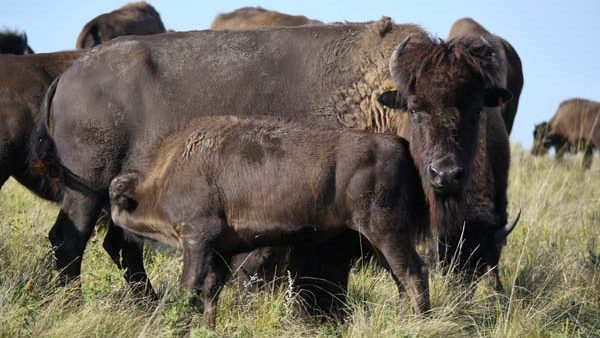
Sun grew up in a Chinese city of 1 million people, where “Wild nature didn’t exist.” Well, at least not on the scale of the Ordway Prairie. Sun found her own nature—watching cicadas and whatever insects she could find. “My mom would get so mad at me because I’d disappear for a few hours to study ants,” she says.
When the herds weren’t doing much, the two enthusiastically collected bison bones scattered on the prairie in an attempt to reconstruct an entire skeleton – purely for fun.
And while they discussed all the usual things that interest 20-year-olds, they were equally likely to be discussing Temple Grandin’s theories on animal behavior, the evolutionary adaptations of parasites or the similarities between lion prides and bison herds.
A tick crawling up blue jeans? A cause for celebration rather than concern. “They’re really fascinating creatures if you look at them from an ecological and evolutionary perspective,” says Hulke. “Just think how they’ve adapted to latch onto creatures that brush by. It’s amazing.”
When I asked what her classmates might think of that sentiment, she just shrugged. “They have to face the facts. Biology’s cool.”
Conservationists have focused much attention on introducing young people to nature. Equally important, though, is creating opportunities for young people who are already interested to learn and practice their skills – to develop the next generation of conservation leaders.
Undergraduate research offers the chance to develop those leaders, while they contribute to meaningful conservation research. Many of the biggest names in conservation, from Edward O. Wilson to Jane Goodall, developed their careers through early research opportunities.
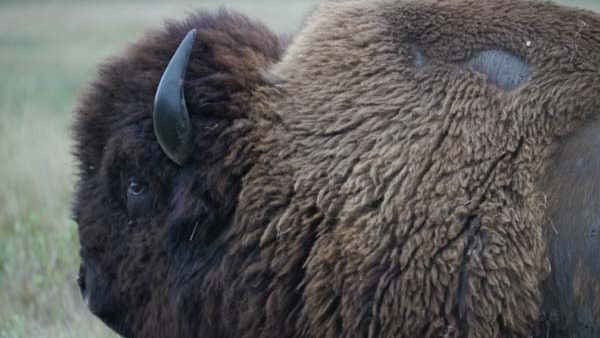
Get Shortay
It’s the end of a long day on the prairie. Hulke and Sun have found and recorded all the dominant bull bison, save one – an aggressive four-year-old with the odd moniker of Shortay. He’s not been seen for several days, so chances are he’s in some remote corner of the prairie. They’ll have to look for him tomorrow.
It’s been a full day’s work, and the two students are relaxed now as they drive towards headquarters. They crank the only radio station they can get out here. Carly Rae Jepsen is on—a song they both love—and they’re swaying and singing “Call Me Maybe” at full volume.
And then, cresting the hill, a shaggy brown lump appears in the distance. Hulke hits the brakes; Sun is on the binoculars, peering intently.
“Well, well, well. Who do we have here,” Sun mutters. She stares into the binoculars again, turns toward her friend with a huge grin. “It’s ShortTAYYY!”
Hulke is already gunning the pick-up. Sun puts down the binoculars as she fumbles for the GPS and camera. They race across the rutted grassland to record the coordinates of their last bull bison for the day, the music turned even higher to celebrate. As they close in on Shortay, they’re pumping fists and raising the roof and yelling out to each other at their unexpected good fortune.
The sun burning orange over the unbroken prairie, the students jotting notes, the bison bull tossing its head indifferently as bison bulls have been doing for millennia: Is it possible to feel gloomy about the future of conservation at moments like this?
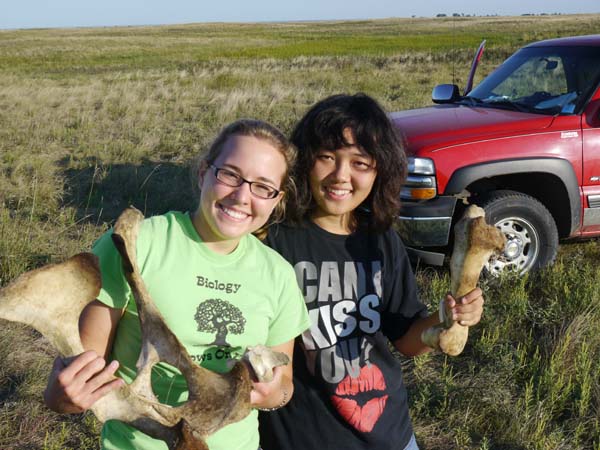

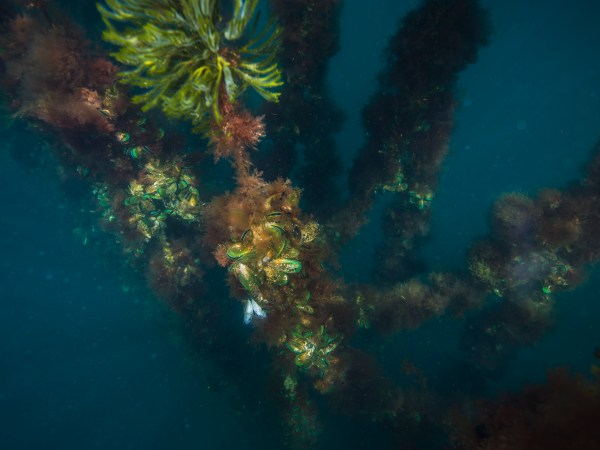
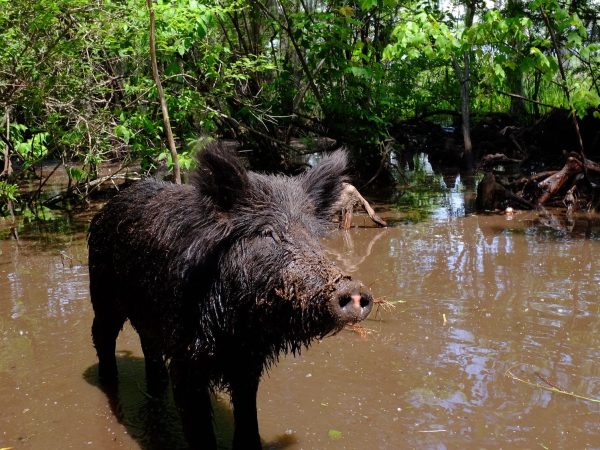
I love it keep um coming